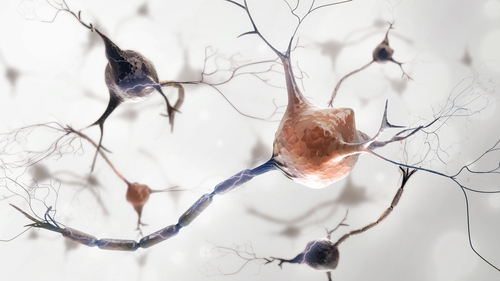Stem Cell Transplant to Facial Tissues Eases Symptoms in 2 Patients

Stem cells transplanted into the facial tissue of two people with Parkinson’s disease led to sustained reductions in motor and non-motor symptoms, lower medication doses, and a better quality of life, a case study reported.
Its authors recommended further investigation into this method to confirm its efficacy, and to determine the best way of administering this cell treatment.
The case study, “Sustained clinical improvement of Parkinson’s disease in two patients with facially-transplanted adipose-derived stromal vascular fraction cells,” was published in the Journal of Clinical Neuroscience.
Stem cell-based therapies for Parkinson’s disease include procedures that transplant specific populations of stem cells into the brains of patients, with the capacity to replace cells and regenerate injured tissue.
Mesenchymal stem cells (MSCs) are a type of stem cell that can be reprogrammed into various types of cells, and are found in large populations in fat (adipose) tissue.
A portion of cells from isolated adipose tissue — called the stromal vascular fraction (SVF) — contains a mixture of MSCs and other types of cells with anti-inflammatory and anti-fibrotic properties, as well as the ability to stimulated the growth of new blood vessels (angiogenic).
Despite encouraging results in animal models of neurodegenerative diseases such as Alzheimer’s, few stem cells reach the injury site — in this and Parkinson’s case, the brain — by administering SVF intravenously (directly into a vein). Alternate ways of delivery are required.
Facial and nasal tissues are potential alternative sites for a stem cell transplant, given the rich blood supply that connects with the brain.
Transplants of SVF cells into facial tissue that helped to lessen symptoms in two Parkinson’s patients are described in this report by researchers based at Wake Forest University, along with colleagues at the University of Miami and collaborators in Spain and Nicaragua.
SVF cells were first isolated from fat tissue collected from each patient under brief general anesthesia, then injected into the tissue layer below the skin of the upper, middle, and lower cheek using a small needle to minimize injury. The procedure was tolerated without notable side effects.
The first patient was a 72-year-old man with tremor-dominant Parkinson’s who, after showing a hand tremor, developed stiffness in the neck, shoulder, and leg affecting his ability to walk and drive. Despite being treated with levodopa and related therapies, he continued to deteriorate and was selected for the procedure.
Two weeks after cell injections, the man reported subjective improvements that peaked around four to six months post-treatment and were sustained over five years of follow-up. They included improvements in his ability to walk, sit-to-stand and bend, talk, and his handwriting and utensil use, and facial movements. Non-motor improvements included lesser skin dryness, lesser drooling, better sexual function and libido, and lesser fatigue.
Parkinson’s Disease Questionnaire (PDQ-39), which measures health status and quality of life, was administered before the procedure and five years after it. Most notable improvements were seen in the Mobility and Activity of Daily Living domains, with an overall subjective score dropping from 70 to 49 (lower scores reflect better quality of life).
The Unified Parkinson’s Disease Rating Scale (UPDRS) score, which assesses both motor and non-motor symptoms, moved from 20 before the injection to 4 five years later (lower scores represent lesser disability). A significant reduction in the patient’s levodopa equivalent daily dose — the combined total of levodopa-related therapies — was also recorded.
Based on this patient’s success, the transplant was also given a 50-year-old woman with Parkinson’s onset in her trunk and lower limbs. Despite her levodopa and related therapies, she began to experience difficulty walking, which developed into a resting foot tremor.
One year after stem cell injection into the face and the nasal cavity, she reported subjective improvements in her ability to sit, turn over in bed, and enhanced fine motor skills, facial movements, and better sleep. Her right foot tremor lessened as well.
Her PDQ-39 scores also reflected better mobility and daily living activities, with a subjective score decrease from 74 to 19. Her UPDRS score dropped from 18 to 3, with a significant reduction in her levodopa equivalent daily dose as well.
“This case highlights the unusual clinical outcomes associated with SVF cell transplantation to the face,” the researchers wrote. “Symptoms and signs may manifest quite quickly and with potential long-term stability over time.”
“Further investigations using SVF for [Parkinson’s disease] are warranted to verify efficacy and clarify the best route of administration and the potential mechanism of action,” they added.






